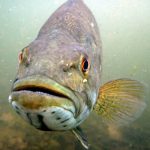A newly released report from the Hudson River Natural Resource Trustees found that the Hudson River, for greater than 200 miles below Hudson Falls, New York, is extensively contaminated with polychlorinated biphenyls (PCBs).
According to the study, surface waters, sediments, floodplain soils, fish, birds, wildlife, and other biota are all contaminated with PCBs.
The report summarizes available information on PCB contamination in the Hudson River ecosystem, including historic information. The report focuses on data collected and analyzed between 2002 and 2008, as part of ongoing natural resource damage assessment and restoration activities, before any remedial dredging began in 2009.
The report demonstrates decades of high levels of PCB contamination and likely adverse effects on living organisms exposed to the contamination in the Hudson River.
According to the report:
PCBs released from General Electric (GE) facilities on the Upper Hudson River present a serious and long-term threat to the health of the entire Hudson River ecosystem.
In fish, PCB levels associated with biochemical changes and adverse reproductive effects are exceeded.
Edible portions of fish exceed the U.S. Food and Drug Administration’s tolerance level for PCBs, and there are advisories on fish consumption due to PCBs throughout the upper and lower Hudson River.
Because of concerns about the contamination and its potential impact, the Hudson River Natural Resource Trustees (U.S. Department of Commerce, U.S. Department of the Interior and the State of New York) are conducting a natural resource damage assessment. Studies on natural resources of the Hudson River, including fish, mink, sediment, birds, and waterfowl, are currently underway.
To access the report and for more information, visit the Hudson River Natural Resource Trustee websites:
www.fws.gov/contaminants/restorationplans/hudsonriver/index.html
www.darrp.noaa.gov/northeast/hudson/index.html
www.dec.ny.gov/lands/25609.html
source: New York State Department of Environmental Conservation
